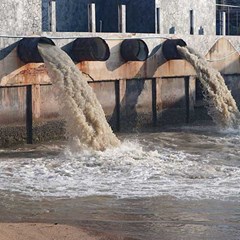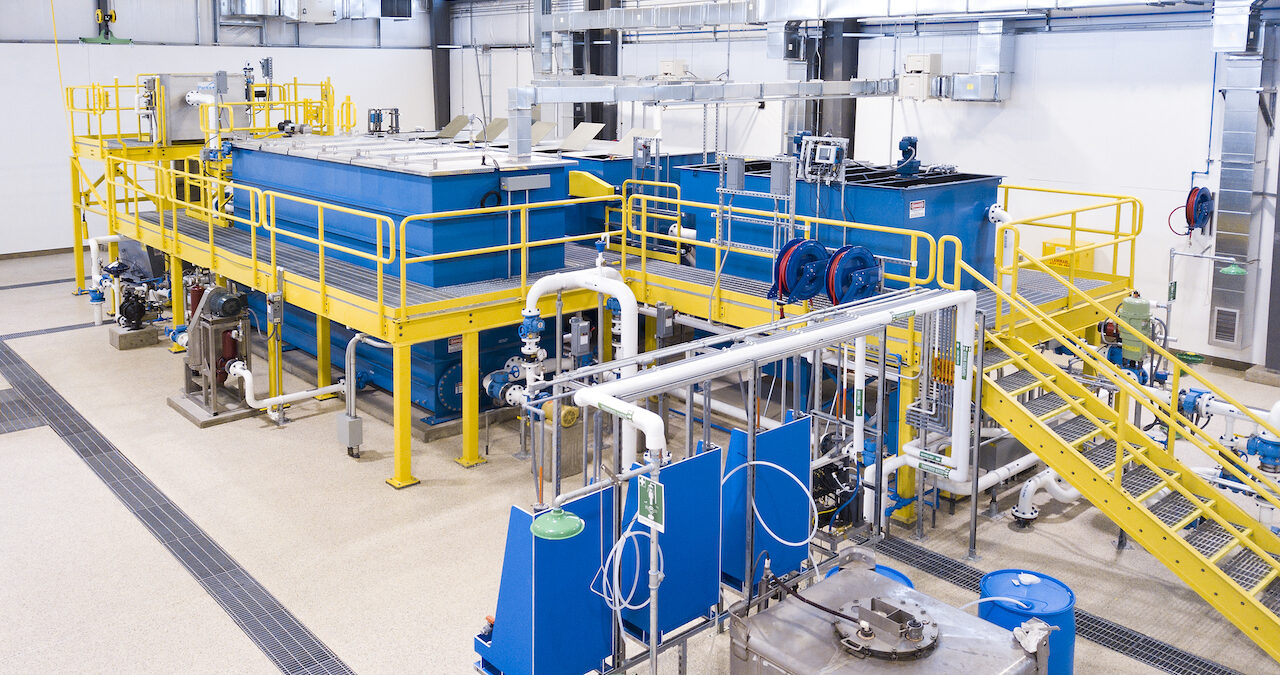Industrial Waste Water Treatment-- Customized Solutions for Effective Wastewater Treatment
Industrial Waste Water Treatment-- Customized Solutions for Effective Wastewater Treatment
Blog Article
Key Techniques in Hazardous Waste Water Treatment Procedures
The treatment of industrial wastewater is an important facet of environmental management, involving an array of methods designed to alleviate the influence of contaminants. From the basic physical approaches that divide solids to the sophisticated chemical and organic procedures that target specific toxins, each method plays a vital role in attaining water quality standards. Advancements in modern technologies such as membrane purification and progressed oxidation procedures offer ingenious remedies for enhancing therapy effectiveness. Recognizing just how these approaches interconnect and their implications for sustainability increases important inquiries about the future of wastewater monitoring in market.
Physical Treatment Approaches
Just how properly can physical treatment techniques address the intricacies of industrial wastewater? Physical therapy approaches play a pivotal function in the preliminary phases of wastewater administration, concentrating mainly on the removal of solids and huge particulates. Methods such as sedimentation, filtration, and flotation are essential for lowering the focus of suspended solids, thereby enhancing the efficiency of succeeding therapy procedures.
Sedimentation entails the gravitational settling of solids, permitting for the splitting up of heavier materials from the wastewater. This technique is specifically efficient in clearing up water prior to organic or chemical treatments.
In addition, flotation protection methods, which utilize air bubbles to raise suspended solids to the surface for removal, work in dealing with wastewater with high focus of fats, oils, and oils. In general, physical therapy approaches function as an essential primary step in the extensive management of commercial wastewater, ensuring that the lots on subsequent therapy stages is lessened and improving overall treatment efficiency.
Chemical Treatment Methods
While physical therapy approaches prepared for reliable wastewater management, chemical treatment techniques are necessary for addressing the a lot more complicated pollutants commonly located in industrial effluents. These approaches utilize different chemical representatives to speed up, neutralize, or oxidize damaging substances, making certain a much more thorough elimination of contaminants.
One common technique is coagulation and flocculation, where chemical coagulants such as light weight aluminum sulfate or ferric chloride are contributed to promote the aggregation of suspended bits. This process enhances solid-liquid splitting up, lowering turbidity and boosting water top quality. In addition, neutralization processes are employed to change the pH of wastewater, using bases or acids to counteract acidic or alkaline streams, specifically.
Oxidation-reduction responses play an essential role in derogatory organic pollutants and microorganisms. Chemical oxidants like hydrogen, chlorine, or ozone peroxide are used to damage down intricate natural compounds, making them less damaging or a lot more eco-friendly. Additionally, advanced oxidation processes (AOPs) integrate several oxidation strategies to boost toxin elimination efficiency.
Organic Therapy Processes
The efficiency of wastewater treatment is considerably boosted by organic treatment procedures, which harness the natural metabolic tasks of bacteria to decay raw material and remove contaminants. Industrial Waste Water Treatment. These processes mainly include anaerobic and aerobic digestion, each tailored for specific kinds of wastewater
Cardio therapy processes utilize oxygen to support microbial development, promoting the break down of organic toxins right into co2 and water. Typical methods include activated sludge systems, where oygenation tanks facilitate the blending of wastewater with bacteria, and dripping filters, which encourage biofilm growth on media surfaces.
On the other hand, anaerobic treatment procedures happen in the absence of oxygen, making use of anaerobic germs to decompose natural matter, causing biogas manufacturing, a renewable resource source. Anaerobic digesters are frequently used in industrial setups for this function, effectively lowering the volume of sludge while creating useful biogas.
The selection of an organic therapy technique depends upon wastewater attributes, therapy goals, and governing requirements. The assimilation of biological procedures in wastewater therapy not just enhances toxin elimination efficiency but additionally promotes sustainability by decreasing chemical usage find out and sustaining source healing.
Advanced Oxidation Processes

Usual AOP methods consist of Fenton's photocatalysis, reagent, and ozonation. Fenton's reagent, a combination of hydrogen peroxide and ferrous iron, militarizes the formation of hydroxyl radicals, making it reliable for treating wastewater consisting of phenolic compounds and other stubborn compounds. Ozonation makes use of ozone as a powerful oxidant, with the ability of deteriorating a vast array of natural pollutants while concurrently decontaminating the effluent. Photocatalysis utilizes light-activated stimulants, such as titanium dioxide, to enhance oxidation reactions and remove contaminants.
AOPs offer several benefits, including minimized sludge manufacturing and the capability to deal with wastewater with high focus of natural toxins. Nonetheless, the execution of AOPs calls for careful consideration of operational specifications and cost-effectiveness, making certain that these innovative techniques are appropriately integrated into existing wastewater treatment systems.
Membrane Filtration Technologies

Microfiltration is effective for eliminating put on hold bacteria and solids, while ultrafiltration targets smaller organic molecules and viruses. Nanofiltration connects the space in between ultrafiltration and turn around osmosis, successfully removing divalent ions and organic substances. Reverse osmosis provides the highest degree of purification, utilized mostly for desalination and getting rid of mono-valent ions.
Membrane layer modern technologies offer numerous advantages, including reduced power intake contrasted to typical therapy approaches, modular layout for scalability, and the possibility for water healing and reuse. Obstacles such as membrane layer fouling and the requirement for routine upkeep have to be resolved to make sure system effectiveness. Generally, membrane filtration technologies stand for a crucial element of contemporary commercial wastewater therapy methods, promoting sustainability and source preservation in water administration.
Conclusion
In conclusion, commercial wastewater treatment utilizes a varied range of techniques, consisting of physical, chemical, biological, and progressed techniques. Each method go to this website plays a vital duty in successfully dealing with various impurities, improving water quality, and advertising resource sustainability. The assimilation see page of these methods cultivates a detailed treatment approach, making sure that industrial effluents satisfy regulatory criteria while lessening environmental effect. Continued innovations in these methods will certainly better improve the efficiency and efficiency of wastewater therapy processes in industrial setups.
The treatment of commercial wastewater is a crucial element of ecological monitoring, involving a variety of methods created to minimize the impact of pollutants.Exactly how properly can physical therapy methods deal with the complexities of commercial wastewater?Advanced oxidation procedures (AOPs) stand for a sophisticated approach in industrial wastewater treatment, developed to successfully break down natural toxins that are usually resistant to conventional treatment methods (Industrial Waste Water Treatment).In conclusion, industrial wastewater treatment utilizes a diverse array of methods, including physical, chemical, organic, and advanced methods. Continued improvements in these methods will certainly further boost the effectiveness and performance of wastewater therapy processes in industrial setups
Report this page